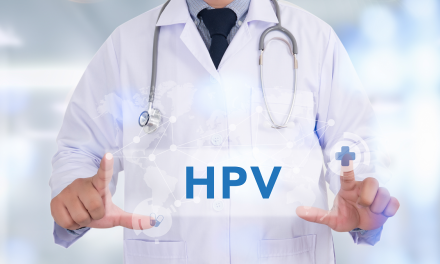As the opioid epidemic continues to ravage communities, experts are looking toward collaborative solutions that not only address active addiction but also promote prevention efforts. Although substance use often co-occurs with behavioral health concerns, the two are typically diagnosed and treated separately. Combining care efforts – as well as understanding individuals’ risk factors within the context of their family, community, and society – offers a faster, more effective approach to treatment.
Addressing Meth Use in the Midwest is a webinar series hosted by the Missouri Department of Health and Human Services (HHS) that explores strategies to address meth use across the Midwest, ranging from prevention to treatment and recovery. July’s session, Impact of Meth on Families, identified recent opioid overdose trends, a successful treatment model gaining traction in Kansas, and potential prevention strategies.
Webinar speakers Shelli Bean, LMSW, and Lydia Fuqua, MA, of Developing Caring Communities Committed to Action (DCCCA) detailed their collaboration with the Kansas Department for Children and Families (DCF) to provide a streamlined, collaborative treatment model that reduces barriers to access for substance use disorder treatment and child welfare. Bean serves as the Program Involvement Specialist, focused on family preservation efforts within the program. Fuqua is the Lead Prevention Specialist and works to identify strategies to prevent substance use and create healthy, thriving communities.
How the START Model Succeeds
DCCCA is based in Lawrence, Kansas with several sites throughout the state. The service area covers counties in two regions – Wichita, which spans ten counties, and Kansas City, which includes five counties surrounding the metro area.
DCCCA receives referrals from Kansas DCF for families in need of substance use disorder (SUD) treatment and child welfare in what Bean calls a “one-stop shop.” The START model – Sobriety, Treatment, and Recovery Teams – works on a quick, comprehensive timeline to address substance use and welfare concerns for families with a child five years or younger in the home.
“It’s more than another initiative,” Bean said. Although she has a robust history of professional experience in child welfare, she had never previously thought to address the issue together with SUD. “It’s a new approach, a new way of doing business for families involved with both child welfare and parental substance use.”
The START model smartly focuses on family preservation, or keeping the family together, leading to more positive outcomes. The model takes a family-centered approach by engaging with the family, understanding their current struggles and goals, and working with them in partnership, rather than as traditional patients.
There are two residential treatment centers in the state of Kansas: one in Wichita for both men and women, and a women’s center in Lawrence. In both centers, school-aged children and younger children are able to stay with their parents throughout treatment. According to Bean, keeping families together this way eliminates the fear of children being removed by DCF, increasing participation rates and allowing parents to focus on treatment.
The goals of the START model are to: prevent or decrease out-of-home placements for children, ensure child safety and well-being, support parents in achieving and maintaining recovery, increase family stability and self-sufficiency, and reduce repeated maltreatment of the children.
According to Bean, the START model was the result of years of collaboration between family preservation, SUD, and behavioral health departments within DCCCA to identify how to move the needle forward for families and children. The overall goal is to improve the system in its capacity to address SUD with parents, child welfare, and other co-occurring concerns.
“The START model is about striking when the iron is hot,” she said. Informed by her career in child welfare, Bean believes moving quickly to connect families in crisis with resources is key to making a lasting impact.
The START model timeline from initial referral from Kansas DCF to treatment can last up to 38 days and moves as follows:
- Within 24 hours to 14 days of receiving initial report: a DCF supervisor assigns report for assessment and refers eligible families to START.
- Within two days of START referral: DCCCA makes contact with the family by close of the following business day. DCCCA schedules and conducts an initial 48-hour meeting.
- Within four days of initial 48-hour meeting: a treatment provider completes parent SUD assessment.
- Within one day of parent SUD assessment: a treatment provider gives treatment recommendations, and a referral is made for treatment.
- Within four days of treatment referral: parent begins intensive SUD treatment.
- Within 12 days of beginning treatment: a case plan is completed within 20 days of the initial referral to DCCCA. Parent(s) receive a minimum of four SUD treatment sessions.
The START model offers two tiers, depending on the level of treatment needed. A tier one referral is more intensive, with a LMSW spending six weeks working with the family on therapy and mental health care. Tier two offers a case manager and family mentor working together, up to six months, visiting the family regularly to determine progress within the program.
Family mentors have lived experience with SUD and at least two years of recovery time, allowing them to relate to families in crisis. If it is decided that a family needs more intensive follow-up and care, they are transferred to tier one to coordinate with an LMSW to receive behavioral health and SUD care.
If families are already working with a behavioral health and/or SUD care provider, the START model would assist with coordination between the current provider(s) and DCCCA’s family preservation department.
The comprehensive, collaborative model takes the burden off of families to find and coordinate care, which can be a daunting and timely process otherwise. The model’s timeline also offers insight into how long until treatment begins and moves quickly once started, unlike individual providers or facilities who may have waitlists or long waiting periods before they can accept new patients.
Creating Thriving Communities
In addition to family preservation, DCCCA also focuses on prevention efforts among youth to create substance-free communities. Substance use doesn’t exist in a vacuum, it affects individuals who use as well as their families and communities. Because of this, effective strategies are ones that take various contexts into account.
“Our aim on the prevention side is to create healthy, thriving communities,” Fuqua said. “We want individuals and communities to feel supported, connected, and have access not only to resources but to drug-free environments within the community.”
According to Fuqua, DCCCA believes this goal begins with youth – if substance use can be prevented from ever happening, the result is an incredible return on investment regarding the health and well-being of individuals, families, and communities.
Although evidence-based prevention strategies for meth-specific programming is limited, substance use prevention strategies generally show that earlier intervention leads to better outcomes. Comprehensive strategies, such as those identified by Community Anti-Drug Coalitions of America (CADCA), are especially effective.
CADCA promotes community-level, multi-faceted approaches to reduce youth substance misuse by focusing on providing information, building skills, providing support, enhancing access, reducing barriers, impacting the physical design of communities, and impacting policies at the community level.
This style of approach looks at risk and protective factors in various contexts from the individual to societal level to determine which characteristics exist that either put people at risk for, or protect them from, behavioral health and substance use issues.
“We don’t as individuals exist in isolation,” Fuqua said. “We’re all part of families, communities, and societies. Within each of those contexts, there are a variety of risks and protective factors.” As explained by Fuqua, risk factors are rain, protective factors are an umbrella.
Within the context of families, examples of risk factors can include child maltreatment or abuse, or parent(s) who use substances or have a mental health disorder. A protective factor can be parental involvement in a child’s life. Trauma and genetic disposition to substance use is more likely to lead to behavioral health and substance use issues among youth, whereas a safe and supportive home environment can provide a foundation for other prevention efforts.
At the community level, risk factors can include neighborhood poverty or violence, while protective factors may be after-school activities or trusted adult mentors within the community. Within society as a whole, risk factors can be norms and laws favorable to substance use, while protective factors in comparison can be laws protecting marginalized groups such as BIPOC youth or LGBTQ+ youth.
“We also want to think about different age groups and the different risks and protective factors influencing behavioral health at that given time,” Fuqua said. For example, prevention efforts among middle school and high school aged children may vary due to differing social pressures, among other factors. “The actions needed to impact these risks and protective factors vary by where young people are at developmentally.”
Universal, or primary, strategies take a broad approach and focus on an entire population. These strategies might be implemented in schools, communities, and workplaces and encourage efforts such as improving access to early childhood education and education for physicians about meth use and treatment.
Selective, or secondary, strategies are aimed at individuals whose risk for developing SUD is significantly higher than the rest of the population. The focus is on biological, psychological, and social risk and protective factors, such as prevention education for families living in poverty with young children and peer support groups for people with a family history of meth use.
Indicated, or tertiary, prevention strategies target high-risk individuals who are identified as having minimal but detectable symptoms of SUD. These strategies focus on immediate risk and protective factors in that individual’s environment, such as a substance use program for high school students who are experiencing early signs of SUD.
Overall, strategies aimed specifically at reducing risk factors for meth use and increasing protective factors, like school and community involvement and family connectedness, are strategies that will be most effective.
“Since multiple contexts influence our lives, multiple strategies are absolutely critical to prevent meth use among our young people and to really promote emotional and physical well-being,” Fuqua said.
Addressing and Treating SUD
According to the Kansas Department of Health and Environment, overdose death rates in Kansas have fluctuated between 2005-2020 with an upward trend in opioid-related overdoses specifically. Overdose deaths by opioids sharply increased from 2017-2019 and even more so from 2019-2020, demonstrating the toll opioids like heroin and fentanyl are taking on communities.
After hitting new highs in psychostimulant (including meth) and opioid overdose deaths in 2019 and subsequently breaking those records in 2020, Fuqua anticipates an even higher increase in 2021 data. The goal of the webinar, and the rest of the series, is to offer evidence-based approaches to address substance use and reduce overdose deaths through the lens of family preservation and prevention efforts.
For questions or information about the Addressing Meth Use in the Midwest series, contact Rae Hutchison at CHutchison@hrsa.gov.
To learn more about DCCCA, visit https://www.dccca.org/. For assistance with SUD, behavioral health, and child welfare, visit https://www.dccca.org/get-help-now/ or email gethelp@dccca.org.
More resources:
- SAMHSA’s National Helpline: 1.800.662.HELP
- SAMHSA’s Treatment Locator: https://findtreatment.samhsa.gov/
- Crisis Text Line: Text KANSAS to 741-741
National Suicide Prevention Lifeline: Call 988 or visit https://988lifeline.org/








